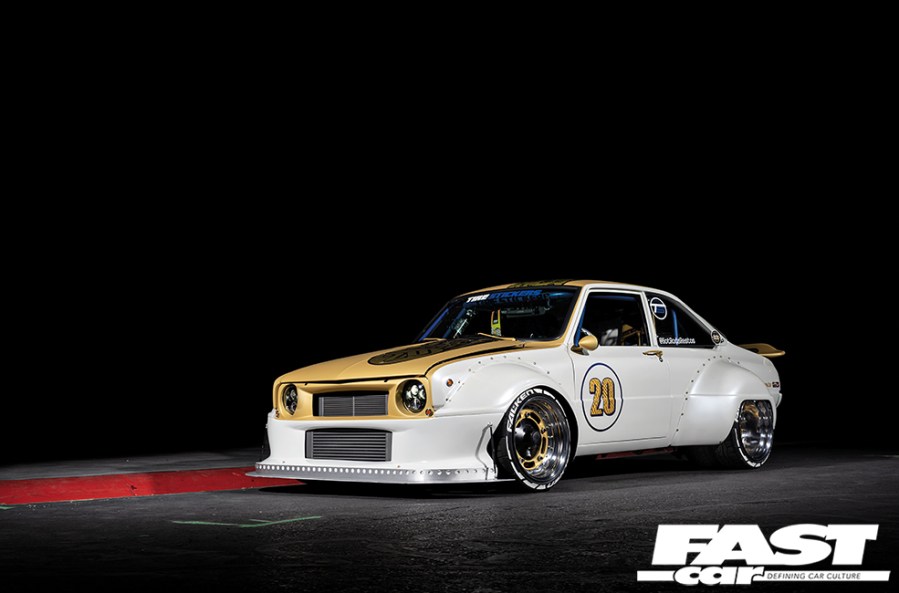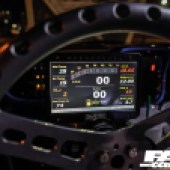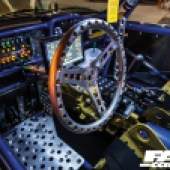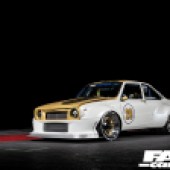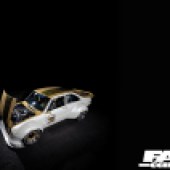This peculiar Japanese curio marches to the beat of its own drum… but just what in the holy hell is it? Banzai lifts the lid on this modified Mazda R100.
In early 1969, in the Metromedia recording studios in NYC, a drummer named Gregory Coleman laid down a break that would change the world. You may never have heard of Coleman. The song in which he played this break, Amen Brother, may also be unfamiliar to you; it was an instrumental b-side to the song Color Him Father by The Winstons, which you might also have never heard of. But you’ll definitely know the break. How? Well, it’s all thanks to the sampling culture of the 1980s; as producers embraced these new-fangled samplers and hungrily plundered the musical archives for piquant nuggets to pilfer for their own mixes, a pioneer named ‘Breakbeat Lou’ Flores found this six-second sample from Amen Brother and put it on the first volume of his popular Ultimate Breaks and Beats series. And so the Amen Break was born. Everybody sampled it. Slow it down a little and it becomes the beat to pretty much every early hip-hop track from NWA to Mantronix; speed it up and it underpins every iconic drum ‘n’ bass track. Its appeal endured through the 1990s, being sampled by everyone from Oasis and Bowie to The Prodigy and even the Futurama theme song. It’s estimated that somewhere between 3-4,000 songs use the Amen Break. Just how mental is that? And, while we’re on the subject of mental, there’s a very clear parallel to draw between this six-second lick and the Mazda Familia.
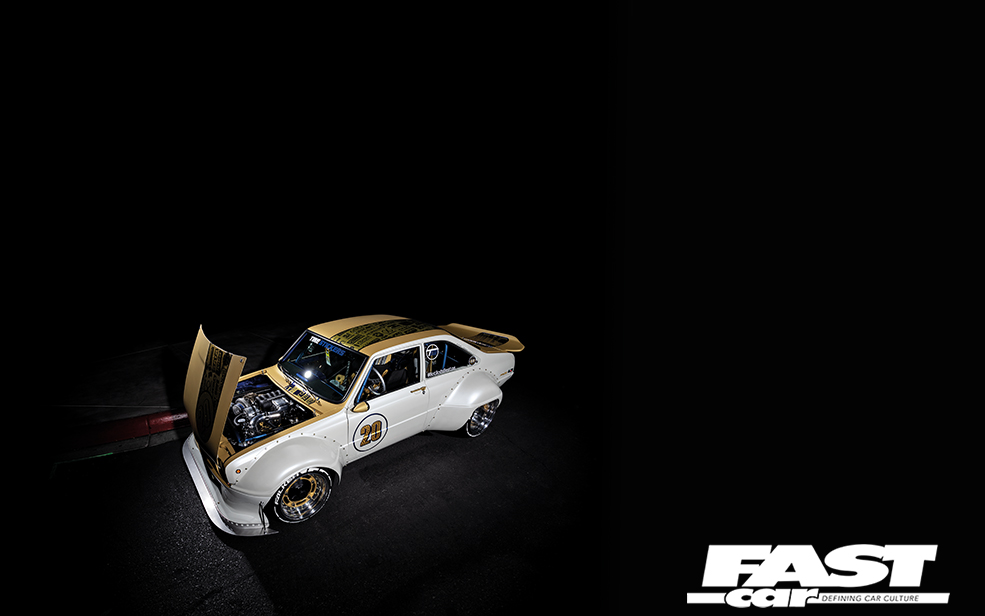
This is a car many people won’t have ever heard of, and yet its influence resonates throughout the generations in ways it’s often hard to imagine. For one thing, one of its variants became the first rotary-engined car to be mass-produced in Japan for export to Europe and North America. NSU may have got to mass rotary production first, and the Familia wasn’t Mazda’s first Wankel-wagon, but this was the Dorito-motivated car built to take on the world.
As if we weren’t mining an obscure enough seam already, the second-generation model spawned an offshoot by the name of Familia Presto Rotary – more commonly referred to as the R100. That’s the car you see spread across these pages… although this one’s changed a fair bit since it left the factory in 1972. We’ll get to that shortly. The R100 name referred to the model’s power; motion came from the 10A twin-rotor unit, with power strangled to a flat 100bhp thanks to a downsized carburettor – nevertheless, this gave buyers a tax advantage by having a lot more power than supposedly comparable 1.0-litre four-stroke motors. The Wankel-engined Familias were differentiated from their more conventional piston-toting brethren by their pointier noses and twin round taillights – the latter becoming a design feature that would continue down the Mazda rotary line for decades.
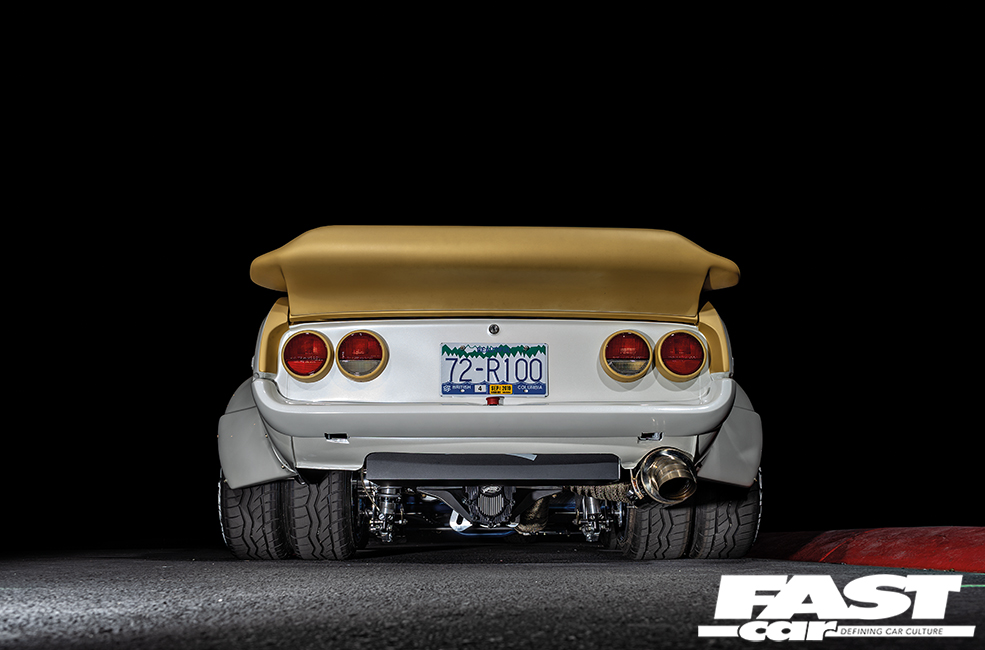
The R100 proved to be a surprising success in North America, which spurred Mazda on to pursue a successful motorsport career with the Familia coupe, and these are all cultural touchpoints which intrigued Canada’s Rod Nielsen very much. Rod’s a dyed-in-the-wool muscle car fan, the head honcho at Hot Rod’s Restos in Abbotsford, British Columbia, although in amongst all of the big-block Detroit iron, his affections enjoy a distinct Asian flavour. You see, when Rod was a teenager, his brother had a Toyota Celica project, and that planted a seed in his affections. A few decades later, and with countless unique and award-winning custom muscle cars under his belt, Rod decided to get himself something Japanese.
Being the sort of guy known for not staying on the established path, the Mazda R100 made a lot of sense as a project base, simply because it’s got the Amen Break cachet: something hugely significant which not many people have actually heard of – at least, not in a way they’re aware of. So Rod set about finding one.This was by no means an easy task; while over 100,000 of these cars were built, we’re not exactly tripping over them these days… but thankfully our man was able to track down a solid donor from a Mazda enthusiast in Maple Ridge, BC. Some people are still hanging on to these things. Although perhaps if this marque aficionado had known what Rod was going to do with it, he mightn’t have relinquished it so freely!
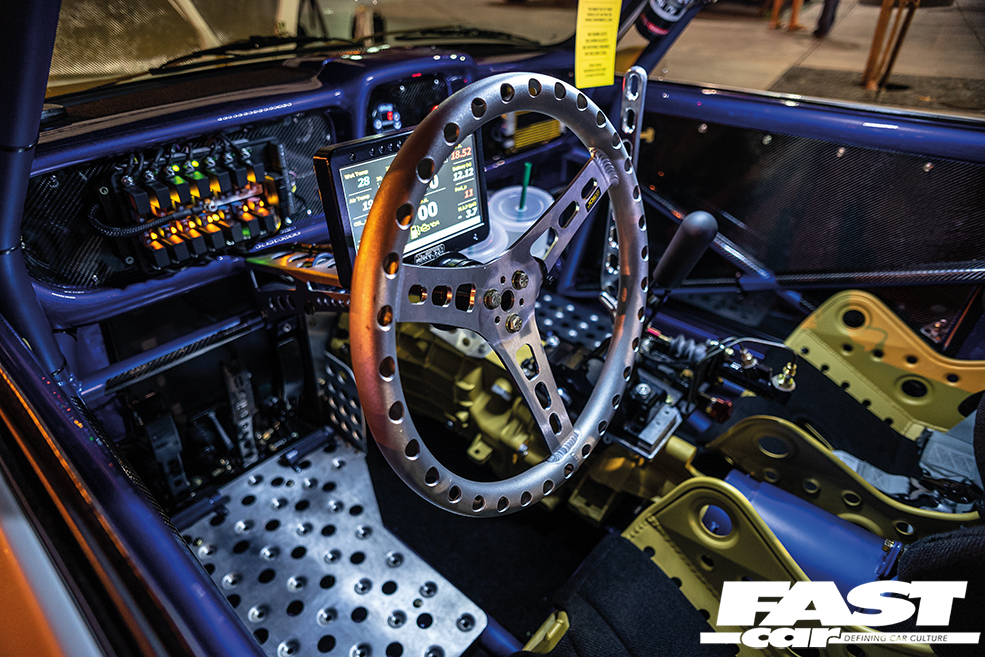
Unlike his usual projects, Rod was in the fortuitous position here that he was unfettered by client budgets and, more importantly, client fear and nervousness, given that this R100 would be his own personal car which he had no plans of selling. So he was able to build something unique; something that didn’t follow any trends, but instead showcased the custom-oriented ideas inside his head – which frankly sounds like a place populated by LSD-tinged freakouts where Pablo Picasso meets M.C. Escher for a good dust-up. Wasting no time, Rod stripped the whole thing down to first principles, set about moving the bulkhead back by a clear foot (he had a bigger engine in mind), scything out the floorpan, and crafting an incredibly intricate and complex tube-frame chassis from chromoly tubing.

With the architecture in place, looking like a cross between a Maserati Birdcage chassis and something from Touring’s Superleggera line, Rod was able to install his engine of choice: the mighty triple-rotor 20B from the 4th-gen Eunos Cosmo coupe. This is an oustandingly visceral motor, making 300bhp in stock production form, and rather a lot more now Rod’s had his way with it. This 20B was built by Marko Stilinovic at Forcefed Performance, and features a single Borg Warner S400 SX-E 72mm turbo with Turbosmart 60mm wastegate and dual Race Port blow-off valves. It’s also been bridge-ported, which is a serious-as-hell race-car approach giving that distinctively abrasive BRAP-BRAP-BRAP idle that sounds like it’s trying to sandpaper your ears off. Naturally all manner of custom work was required, from cooling and intercooling to mounts and exhaust, and the fuelling’s been colossally beefed up too, with two-stage 1,300cc/2,000cc injectors. The upshot of the madness is a ‘safe’ 700bhp at 16psi, and a wholly psychotic 1,000bhp at 32psi. Just look at the size of the car and try to process those numbers. It’s terrifying.
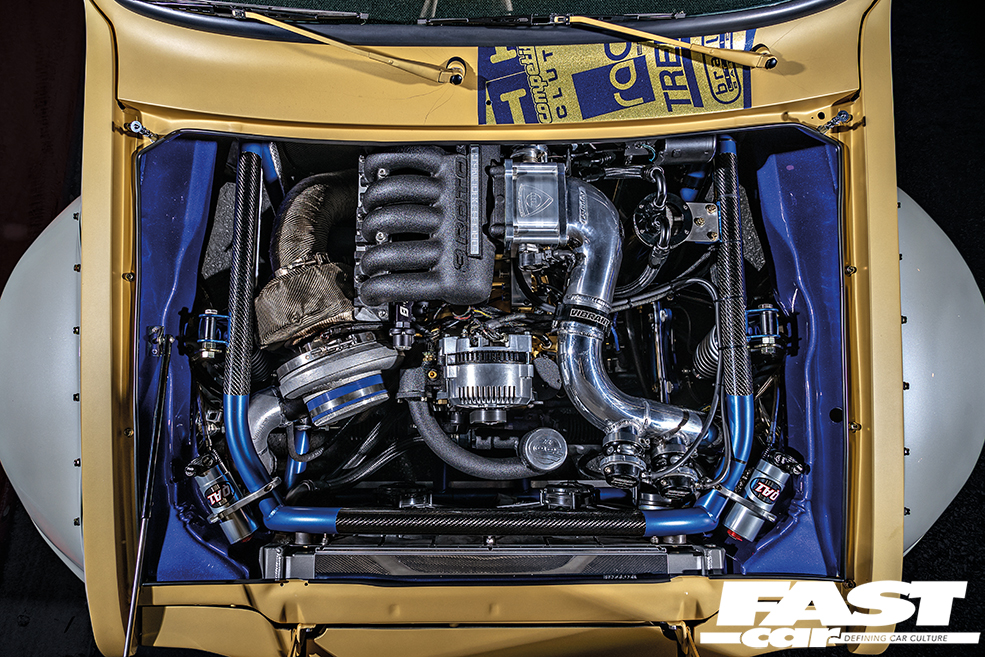
Further surprises present themselves when we turn our attention to the chassis. You’ve probably spotted the dually rear wheels, but this is no traditional twin-wheel setup; instead, these are custom (patent-pending!) ‘TwinRim’ wheels, described as measuring 8x8x16-inches, whereby a pair of 205-section Falkens can be mounted to each wheel. How crazy is that? And if you have to ask why someone would want to do such a thing, it’s probably time to reassess some priorities. As with so many elements of this car, the simple answer is ‘because Rod can’. He designed and built these wheels to break necks at SEMA, and that’s exactly what they did.
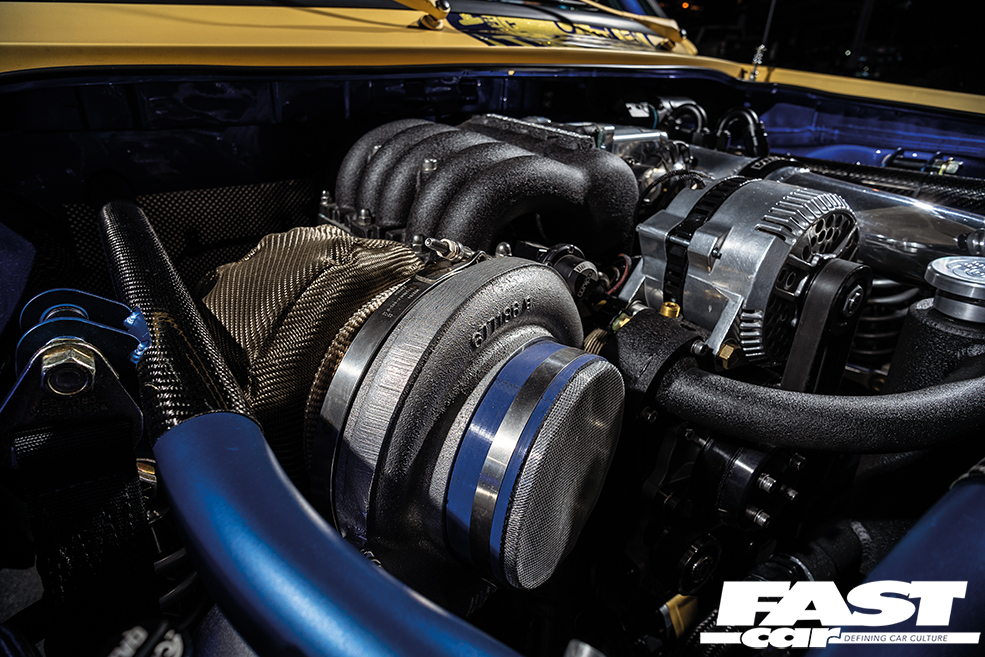
Elsewhere in the chassis we find necessarily brutal Wilwood brakes, joined by a fully custom adjustable suspension setup tied into that beautiful tube frame – which, incidentally, has been finished in dazzling Blue Lightning paint with a matte clearcoat. And with all this bespoke fabrication happening under the skin, Rod had to make… well, the skin itself. There was no way the standard body lines were going to contain all of this rippling lunacy, so he rolled up his sleeves and crafted some bespoke fibreglass panels, including a one-piece front end, vast rear spoiler that’s halfway between tea-tray and whale-tail, and of course those mighty arches. All of which makes the R100 look like some kind of absurd Hot Wheels toy, which is just the look he was going for. With the bodywork painstakingly perfected, it was slathered in a custom white pearl with glitter in the clearcoat, and rather than plastering the whole car in sponsor logos, he took the unusual move of incorporating them all into that broad racing stripe – in House Of Kolor Candy Cobalt Blue with gold glitter flake, naturally. And if you thought the body was nuts, just check out the interior. Proceedings are dominated by the fully exposed gearbox (a Tremec T56 Magnum 6-speed, running an S1 shifter which converts the H-pattern to sequential), while the relocated bulkhead means that the minimalist Kirkey seats are mounted somewhere in the middle of the car. You can’t really miss the lever of fever either, the towering hydraulic handbrake demanding focus, and if you flit your gaze to the rear floor, you’ll find an illuminated acrylic window giving a perfect view of the suspension and quick-change diff. And why not?
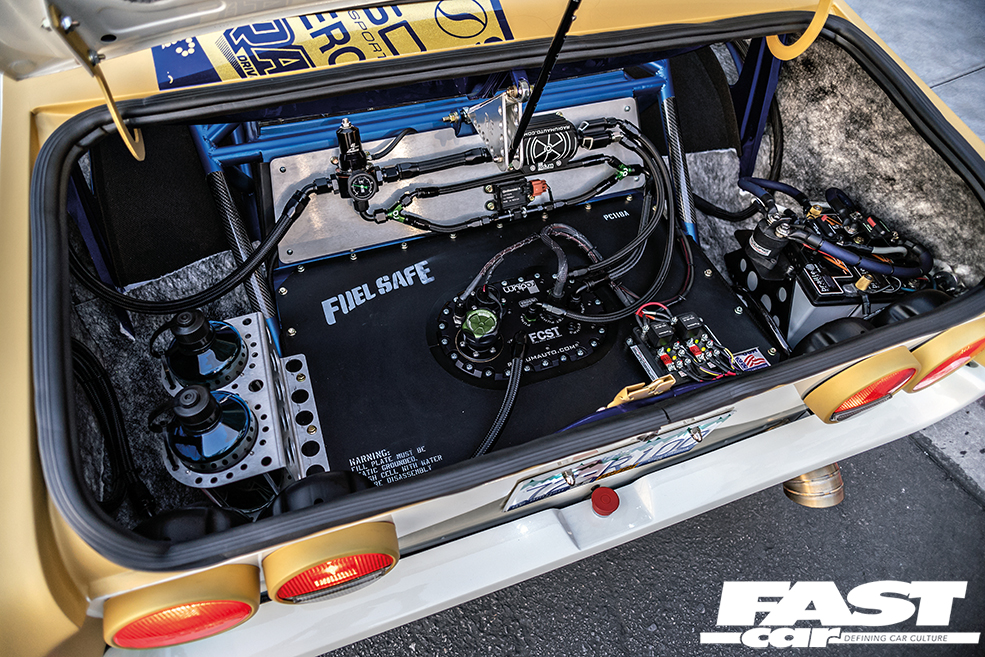
The mechanicals of this car are astonishing: it’s arguably easy enough to build an engine capable of 1,000bhp (well, ish), but to also make it reliable and usable is quite another thing. In addition, the whole car’s been engineered from the ground up to deploy this amount of grunt – the custom suspension means it handles like a race car, while the vast brakes haul up a thousand ponies with little drama. The driver toys are directly geared to making it as fun as it is breathtaking, with the sequential shift, digital readouts, and of course that hydro handbrake. But what’s most captivating about this bizarre car is the way it looks. Few people have heard of the R100, and even fewer would recognise one if they saw it on the street. But Rod’s R100? It’s like some kind of mind-warping UFO, beamed in from another galaxy to shock, amaze and terrify. It’s a six-second drum break expanded into a vast and incomprehensible soundscape; an obscure base element refracted into something massive that can’t be ignored.
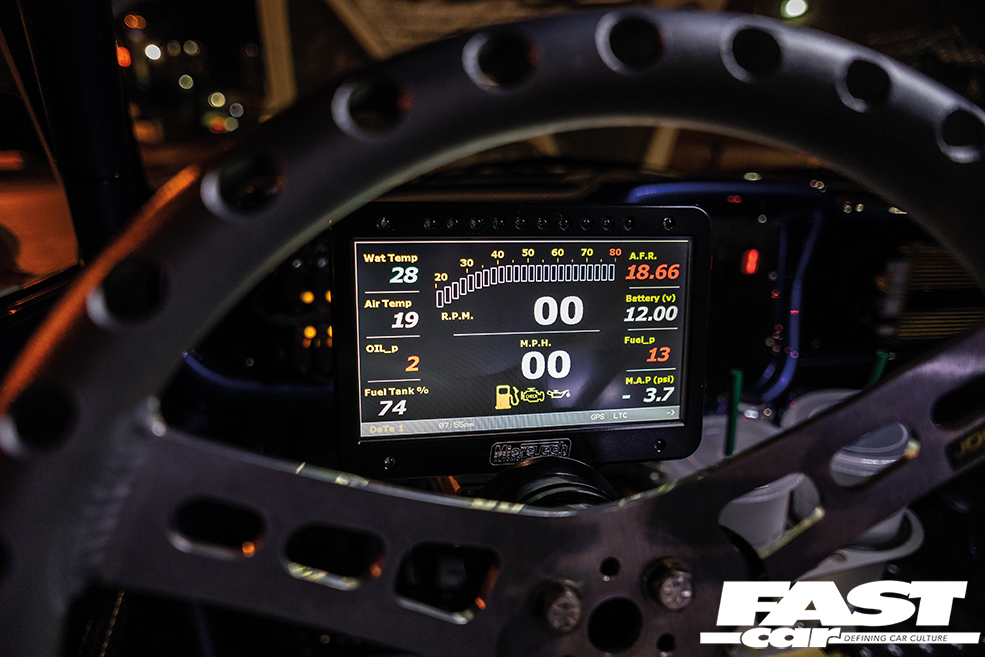
So much of life feeds from repeating patterns and recycled formulae – but we can be damn sure that we won’t see this type of madness again.
Tech Spec: Modified Mazda R100
Engine:
20B triple-rotor Cosmo rotary, bridge-ported, lightened rotors, custom 8-litre HRR sump, Xcessive Manufacturing lower intake manifold, custom Forcefed upper turbo manifold, Borg Warner S400 SX-E 72mm turbo, Turbosmart 60mm wastegate, dual Race Port blow-off valves, custom Vibrant 4-inch exhaust system, Rotary Works 90mm single-blade throttle body, custom Be Cool radiator, Vibrant intercooler and oil cooler, Aeromotive 340gph high-pressure fuel pump, Automotive Extreme Flow regulator, Full Function Engineering fuel rails, 6x two-stage injectors (1,300cc/2,000cc), Tremec T56 Magnum 6-speed transmission – converted to sequential, 7.25-inch twin-disc Competition Clutch, Quicktime steel bellhousing, Winters 10-inch quick-change LSD (4.12; 3.52 final ratio)
Chassis:
8×16-inch Bogart RR Wide 5 wheels with 205/40 Falken Azenis tyres (front), 8x8x16-inch ‘TwinRim’ 3-piece HRR wheels with 2x 205/40 Falken Azenis tyres each (rear), full custom tube chassis (painted Sherwin-Williams Blue Lightning with matte clearcoat), BSB Manufacturing front spindles, Joe’s Racing control arms, QA1 low-friction balljoints, Z-Link rear suspension with BSB birdcages, link bar, Panhard bar and third link, QA1 4-way adjustable shocks with 2.5-inch high-travel springs, Wilwood Starlite hubs, Wilwood Dynapro 6-pot calipers with 11.75-inch GT36 discs and PolyMatrix BP-20 pads
Interior:
Firewall moved back 12-inches, Kirkey seats (mid-mounted), custom dash with 7-inch LTC display, instrument panel and ECU with Turbosmart E-boost2 boost control, custom steering wheel, fully exposed transmission with S1 Sequential shifter, ASD Motorsports hydraulic handbrake, illuminated acrylic floorpan window (exposing quick-change diff and rear suspension)
Exterior:
Custom fibreglass single-piece front end, wide arches, bonnet and whale-tail rear, Sherwin Williams custom white pearl paint with DFX5 glitter in Intercoat clearcoat, racing stripe in House Of Kolor Candy Cobalt blue over gold glitter flake with sponsor logos
Feature taken from Banzai magazine. Words: Dan Bevis. Photos: Viktor Benyi

